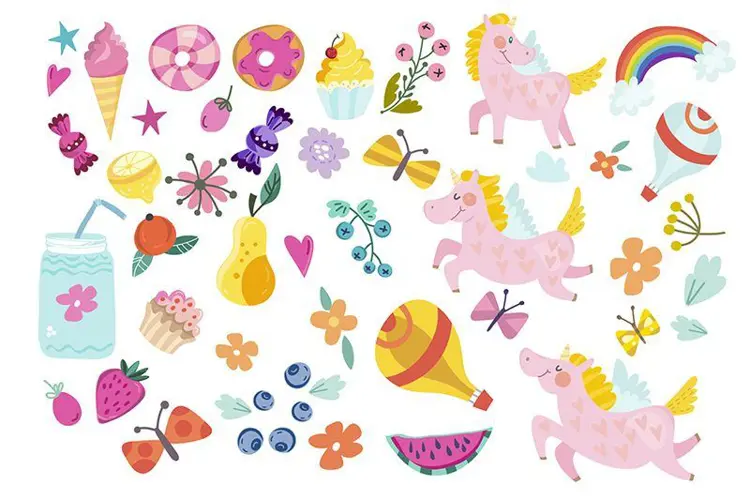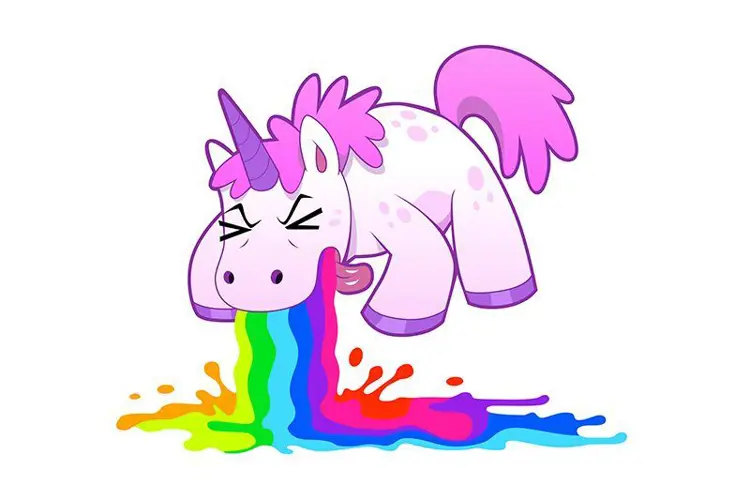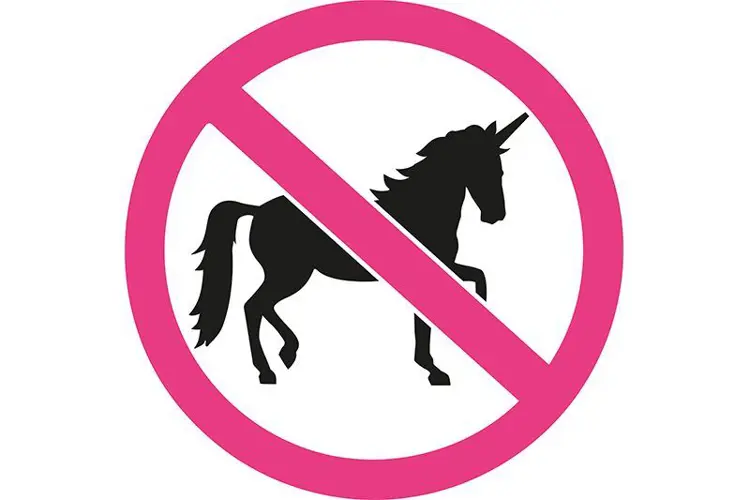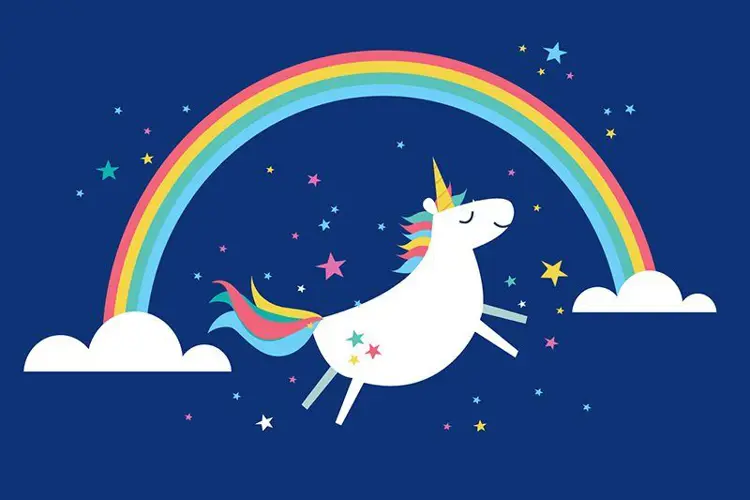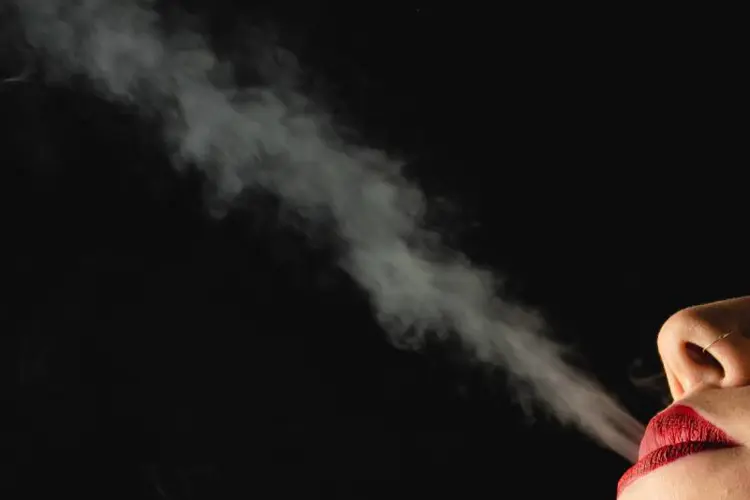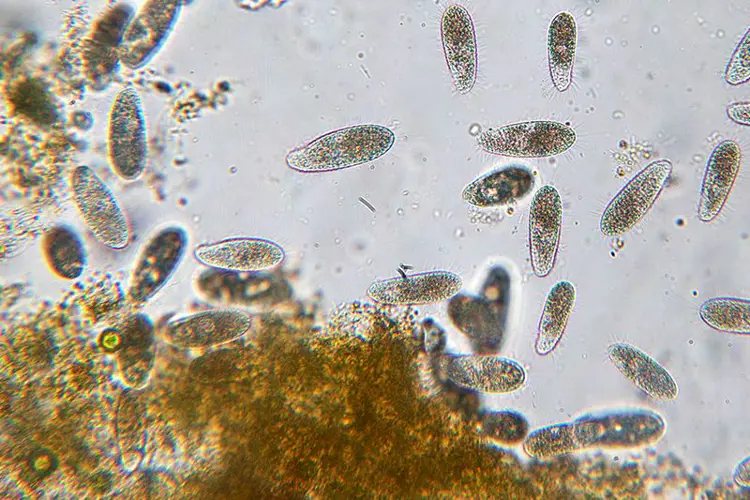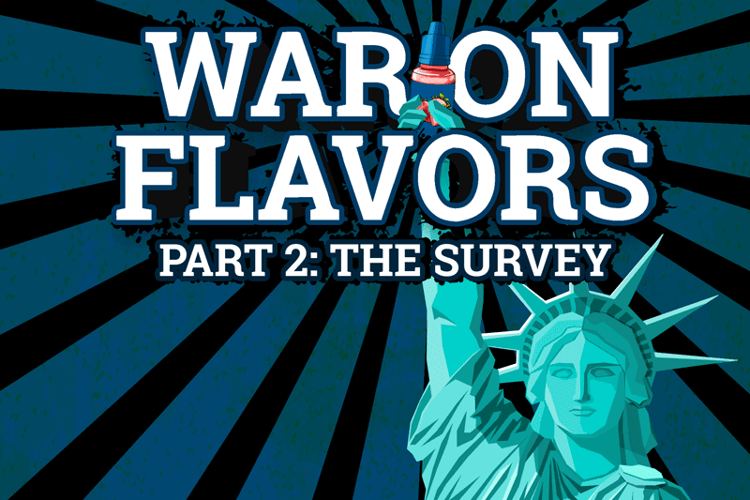Vapers love unicorns. We call unattainable vape mods and vape tanks unicorns, and there are dozens if not hundreds of unicorn-themed e-liquids. Unicorns are mythological creatures, of course. They're not real, and they're impossible to find — much like e-cigarette "marketing to children" and vaping regulations that recognize the lower risk of non-combustible nicotine products.
Tobacco control hardliners apparently like unicorns too. Or, at least, they can work up enough faux outrage about unicorn images in vapor marketing to power a paper that finds its way onto the pages of the absolute worst academic journal anywhere, Tobacco Control.
Stanford hates pictures
The paper was written by Dr. Robert Jackler and Divya Ramamurthi of the Stanford Research into the Impact of Tobacco Advertising (SRITA) project at Stanford University. SRITA began to document cigarette and tobacco advertising, but most of what they do now is Google images from e-cigarette websites. They refer to any picture on any vaping commerce site, by the way, as advertising or marketing. To them, merely existing is the same as marketing. The site is hilarious, although that's not what they're aiming for.
Any time you want to peer into the dim recesses of vaping's past, the SRITA pages are the place to go. It's a glorious collection of vaping irrelevance. Designed apparently as an homage to web design during the first Clinton administration, the site gathers random images from vendors' websites and attributes to the creators the ugliest motives — like wanting to sell things. It's never clear if they would hate e-cig "marketing" as much if there were no pictures, but boy do they hate the pictures.
Been to the GreenSmoke website lately?
"The Wild West marketing practices of the electronic cigarette (e-cig) industry has led to the reintroduction of cartoon characters in tobacco advertising," says SRITA on one page. "The collection of e-cig ads under this theme contains cartoons, anthropomorphic animals, and animated characters resembling those that appear in most children s movies and shows."
Next to a Santa Claus image from a GreenSmoke "pre-Christmas sale," they write, "The electronic cigarette (e-cig) industry has taken every opportunity to associate itself with holidays and cultural symbols, which bring to mind happy times and celebration. Cherished patriotic and cultural icons can be found in a number of e-cig ads. Among the innumerable examples are George Washington, Mt. Rushmore, British royalty, the US flag, the Statue of Liberty, soldiers, astronauts, Santa Claus, and even the beloved family pet." Been to the GreenSmoke website lately?
Stanford studies unicorn secretions
Anyway, back to the unicorns. It would be so much better if we could just print the whole thing for you, because it's endlessly entertaining. Sadly, copyright laws prevent what would be maybe the most popular vaping website article ever. That's a shame, because putting such a monumental work in Tobacco Control guarantees it'll only be seen by about 62 people (44 if you exclude the publication's staff).
Dr. Jackler is pretty worked up about all these unicorns. "Unicorn e-juice products most often are named after the creature’s supposed secretions and excretions: milk, breath, tears, blood, puke, vomit, poop, piss, spew and jizz [sic]," he writes. "In advertisements, the e-juice emanates from the appropriate bodily orifice of the unicorn in the form of an attractive rainbow of colours."
"Descriptions of the flavour of unicorn e-juice products vary, but are usually of the sweet, fruity and creamy descriptors of a type which appeals to youthful palates," he notes. In an article full of citations, there are none for his assertion that sweet, fruity and creamy flavors are particullar favorites of youth. I don't know about you, but I'm 57 and I still like sweet, fruity and creamy flavors. What flavors does the Stanford staff enjoy, cardboard and grass clippings?
Referring to a warning from one vendor that a certain citrus-based flavor is known to crack plastic tanks, Jackler laments, "One cannot help but wonder whether or not it would have a similar effect on teenage lungs over time." Again, no citation for that. Sure doesn't seem very scientific to me.
Hey, a Stanford professor says they're marketing to kids, it must be true!
In fact, sometimes it looks an awful lot like Dr. J is just making stuff up. "Unicorn-themed e-cigarette advertisements are prime examples of the type of youth appealing marketing which are contributing to the rapid rise in teen use." Where is the evidence that any kind of marketing is causing a rise in use? Where are these products marketed exactly? On websites that require age verification? In stores that verify ID before making sales?
Tobacco control zealots constantly and intentionally confuse the "marketing" of independent vapor products — which is almost completely restricted to the sellers' websites and adult-only stores — with the advertising on TV and radio of the major (mostly tobacco industry-owned) brands. They count on their audience (other tobacco controllers, public health officials, policy makers) trusting them and never doing any investigating of their own.
Kill the unicorns: flavor ban
The unicorns are just a means to an end for Jackler and his ilk. He wants regulators and politicians to stay dumb, and trust him. He writes about unicorns and cartoon images to shock people who don't know any better, and who don't want to know any better. Hey, a Stanford professor says they're marketing to kids, it must be true! Good lord, what can we do?!
While the 2016 FDA deeming regulations do not place limits on e-cigarette flavours, in the deeming document the agency indicated that it seeks additional scientific data concerning the roles flavours play in adult cessation of combustible cigarettes and youth initiation to nicotine addiction. It is clear that the FDA is considering invoking the type of flavour ban presently in place for traditional cigarettes.
That's what Jackler wants, for the FDA to use their new deeming authority to ban e-liquid flavors — as they intended to do originally. "Few teen starter smokers are likely to be attracted by tobacco-flavoured unicorn-themed ecigarettes," he writes. Another assertion without evidence, of course, but there it is. He wants anything that tastes good gone. If you're going to vape, it should be just as miserable and boring as possible. You should suffer for your nicotine, you pathetic addict.
While we're on the topic, though, has the lack of candy-flavored cigarettes prevented teens from starting to smoke? Not for the last hundred years it hasn't.
Panic or education?
We can laugh at Dr. Jackler. He's funny, like parents in the fifties getting bent out of shape about that horrible rock and roll, or the skateboard panic in the eighties. Unfortunately, this is exactly the kind of guy that gets taken seriously by legislators and regulators. He's loud and he's not shy about pushing his agenda, and throwing in a double dose of fear and panic while he's at it. They don't know that he's a clown, and that Tobacco Control is a journal that no one outside of the fringes of tobacco control takes seriously.
As long as non-vapers remain ignorant, there will be no call for sensible regulations or laws. We have to educate the public, and we have to create a demand by regular citizens for lawmakers to ignore the moral panic and to seek out scientific consensus. It's not going to happen tomorrow, or next month, or maybe even next year — but we have to start doing it. Until we do, people like Dr. Jackler will run the show.
Have you talked to a non-vaper about vaping today? It's the most important thing you can do right now. An educated citizen, now there's a real unicorn.
The Freemax REXA PRO and REXA SMART are highly advanced pod vapes, offering seemingly endless features, beautiful touchscreens, and new DUOMAX pods.
The OXVA XLIM Pro 2 DNA is powered by a custom-made Evolv DNA chipset, offering a Replay function and dry hit protection. Read our review to find out more.
The SKE Bar is a 2 mL replaceable pod vape with a 500 mAh battery, a 1.2-ohm mesh coil, and 35 flavors to choose from in 2% nicotine.
Because of declining cigarette sales, state governments in the U.S. and countries around the world are looking to vapor products as a new source of tax revenue.
The legal age to buy e-cigarettes and other vaping products varies around the world. The United States recently changed the legal minimum sales age to 21.
A list of vaping product flavor bans and online sales bans in the United States, and sales and possession bans in other countries.

